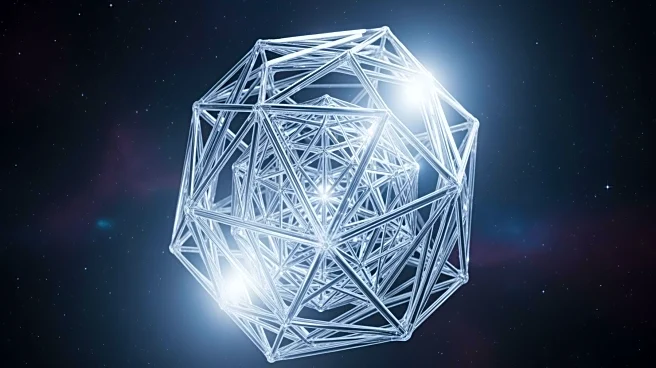What's Happening?
Researchers at the Vienna University of Technology have discovered a new type of time crystal, a phenomenon where particles spontaneously form a repeating rhythm without external influence. This discovery
challenges previous assumptions that quantum correlations between particles would disrupt such patterns. Instead, these correlations can stabilize the time-crystalline phases, offering a new perspective on collective behaviors in quantum many-particle systems. The study involved a two-dimensional lattice of particles held by laser beams, where quantum interactions induced oscillations in the lattice state.
Why It's Important?
The discovery of time crystals has significant implications for quantum physics and technology. Understanding how quantum correlations can stabilize time-crystalline phases could lead to advancements in quantum technologies and high-precision measurement techniques. This research provides insights into the theory of quantum many-body systems, potentially paving the way for new applications in quantum computing and other fields. The ability to harness and control quantum order could revolutionize industries reliant on quantum mechanics.
What's Next?
Further research is likely to explore the practical applications of time crystals in quantum technology. Scientists may investigate how these findings can be integrated into existing quantum systems to enhance their stability and performance. The study opens avenues for developing new quantum devices and measurement techniques, which could have wide-ranging impacts on technology and industry. Collaboration between physicists and technologists will be crucial in translating these theoretical insights into real-world applications.
Beyond the Headlines
The discovery of time crystals also raises questions about the fundamental nature of time and order in quantum systems. It challenges traditional views of symmetry and order, suggesting that complex interactions can lead to spontaneous organization. This could influence philosophical and scientific discussions about the nature of time and the universe, potentially impacting fields beyond physics, such as philosophy and metaphysics.











